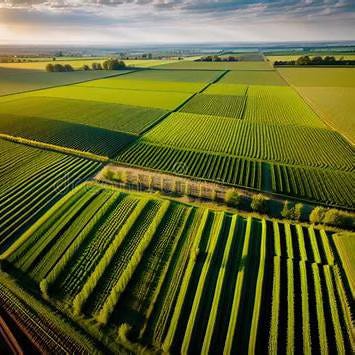Investing in Farmland in 2025: The Quiet Asset Class Beating Inflation Update
By Rafael Benavente
Investing in Farmland in 2025: The Quiet Asset Class Beating Inflation
While tech stocks and cryptocurrency dominate financial headlines, a quieter, more stable asset class is gaining ground among savvy investors in 2025: farmland. This tangible investment has shown remarkable resilience, consistently generating stable returns, offering natural inflation protection, and diversifying traditional portfolios. In an era of economic uncertainty and volatile markets, farmland is becoming an increasingly attractive destination for capital.
1. Why Farmland Is Gaining Momentum
Farmland is a unique investment category that produces both current income and long-term appreciation. Crops generate annual revenue, while the land itself tends to rise in value due to increasing scarcity. The United Nations estimates that global food demand will rise by 60% by 2050, yet the amount of arable land is shrinking due to urbanization and climate pressures. This dynamic creates strong tailwinds for farmland prices and rental yields.
2. Strong Historical Performance
According to the NCREIF Farmland Index, U.S. farmland has averaged 10%–12% annualized returns over the past two decades. Even during economic downturns, farmland has demonstrated low volatility and consistent income through crop sales or lease agreements. Its Sharpe ratio, a measure of risk-adjusted return, has consistently outperformed traditional assets like stocks and bonds. During the 2008 financial crisis, while equities plunged, farmland values continued to climb—demonstrating its defensive characteristics.
3. Accessible Investment Options in 2025
There are now more ways than ever to invest in farmland:
- **Direct Ownership**: Purchasing land outright allows full control but requires substantial capital, agricultural knowledge, and management resources.
- **REITs (Real Estate Investment Trusts)**: Farmland REITs like Farmland Partners (FPI) and Gladstone Land (LAND) offer exposure to diversified farmland portfolios through public markets.
- **Crowdfunding Platforms**: Companies like AcreTrader and FarmTogether let investors buy fractional interests in farmland, typically starting at $10,000. These platforms manage the land, provide reporting, and distribute income.
4. Risks and Considerations
Despite its strengths, farmland is not risk-free. Weather events, crop failures, water shortages, and commodity price swings can impact profitability. Additionally, farmland is relatively illiquid—selling a tract of land can take months or even years. That said, diversification across crops and regions, along with professional management, can significantly mitigate these risks. Due diligence is essential, especially for investors considering direct or fractional ownership in unfamiliar regions.
5. Inflation Protection and Portfolio Diversification
One of farmland's most compelling features is its ability to hedge against inflation. As the prices of food and commodities rise, so do the revenues and land values of farmland assets. This natural inflation linkage makes farmland a smart allocation during periods of rising consumer prices.
Farmland also has a low correlation with traditional assets like equities and bonds, making it a strong portfolio diversifier. Adding farmland can reduce portfolio volatility while maintaining strong returns, especially in long-term strategies aimed at capital preservation and growth.
6. Global Trends Favoring Farmland
The macroeconomic environment further supports the farmland investment case:
- **Population Growth**: The global population is expected to reach nearly 10 billion by 2050, boosting food demand.
- **Water Scarcity**: Access to irrigation and water rights is becoming increasingly valuable.
- **ESG and Sustainable Agriculture**: Investors are increasingly interested in regenerative farming practices that offer both return and environmental impact.
- **Institutional Capital Inflow**: Pension funds and endowments are allocating more capital to farmland for its yield and inflation resilience.
7. Conclusion: A Grounded Investment for the Long Haul
Farmland is one of the most underrated investment opportunities of 2025. It offers a rare combination of steady income, capital growth, inflation protection, and portfolio stability. Whether you invest through a public REIT, a crowdfunding platform, or purchase land directly, owning farmland lets you participate in one of the world’s most essential industries—food production. In a time of increasing economic complexity, farmland remains refreshingly simple: it's productive, real, and always in demand. If you're looking to diversify with an asset that delivers across market cycles, farmland might be your smartest move yet.
By Rafael Benavente

